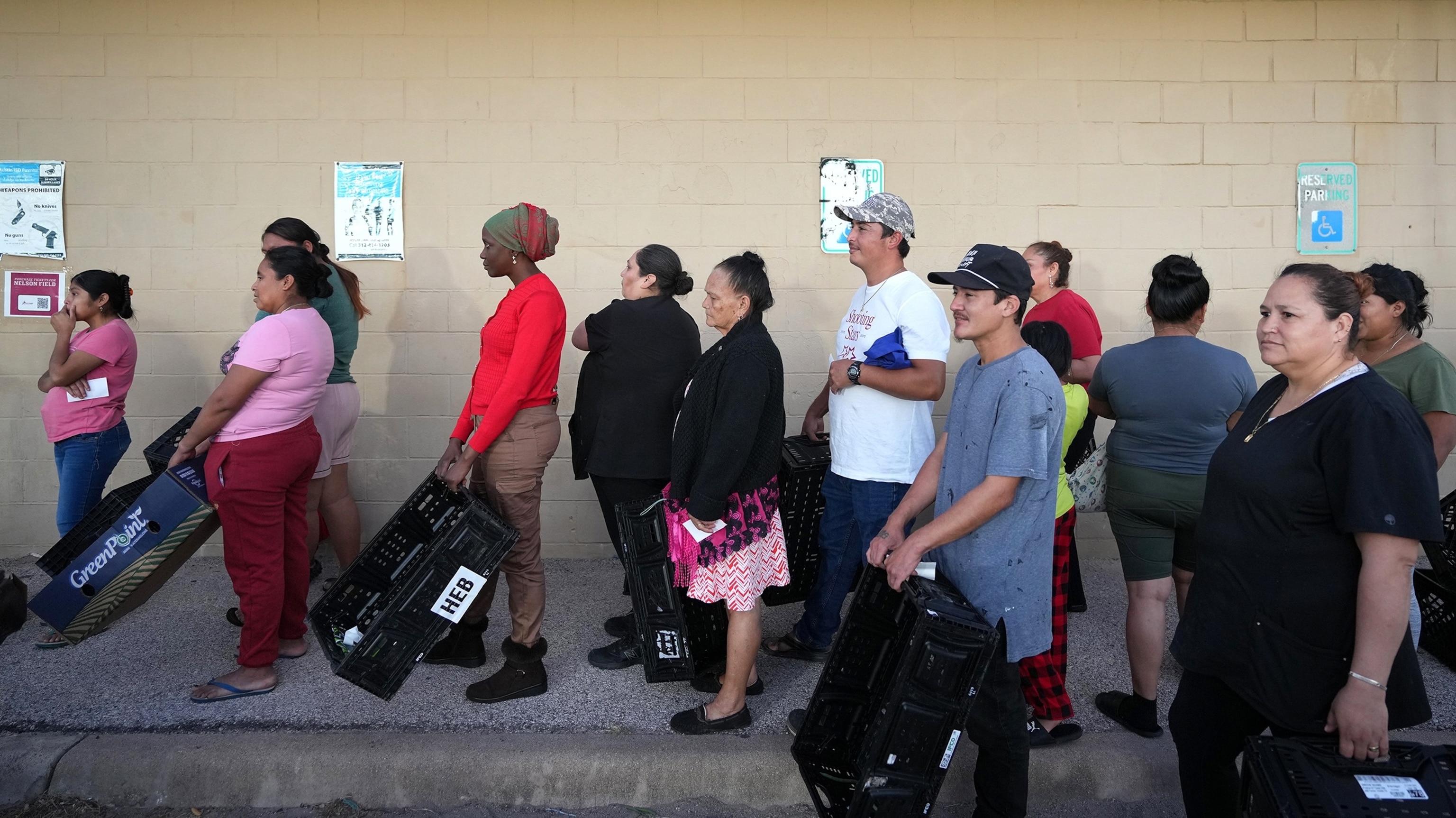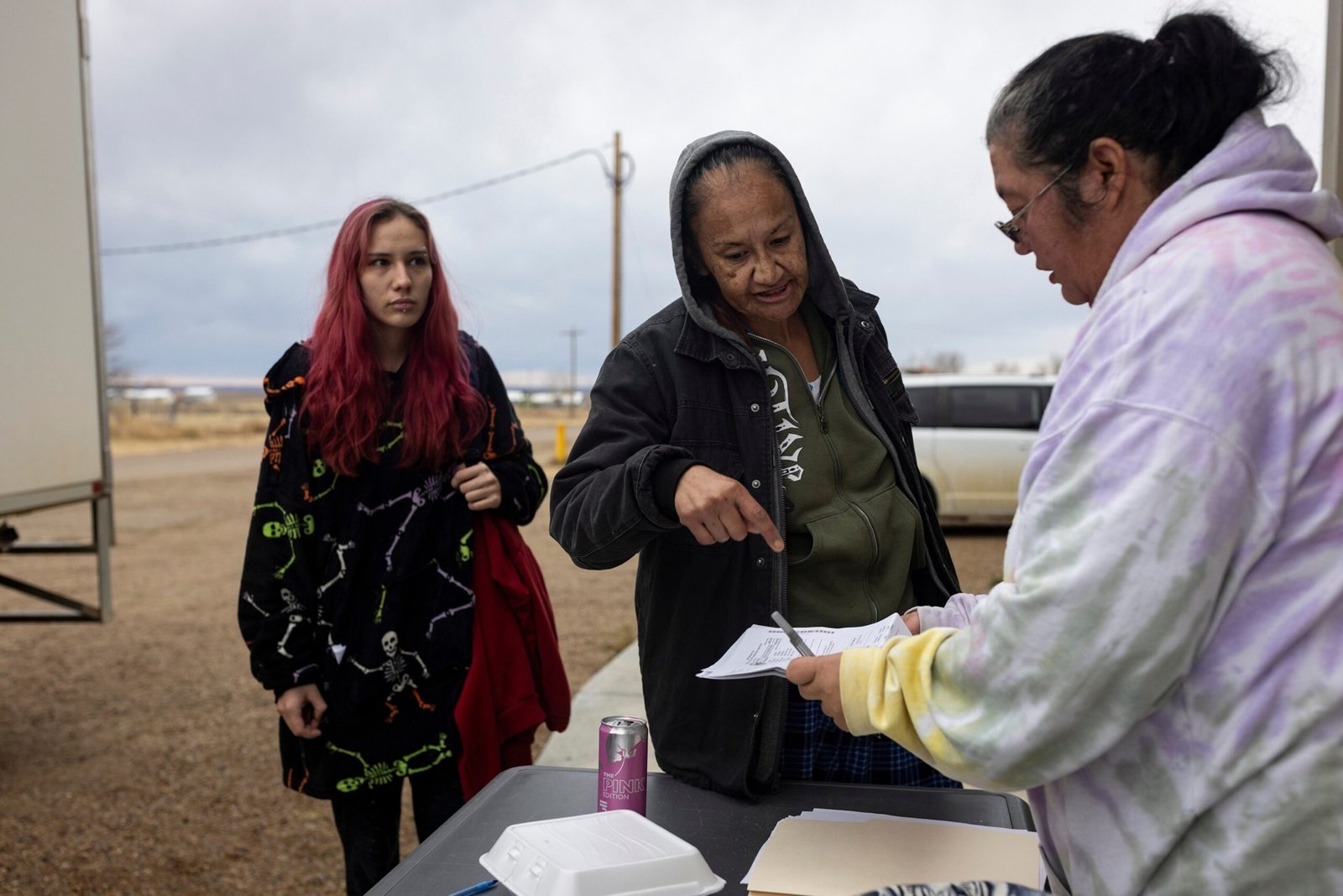Food banks and pantries have been experiencing historic demand since SNAP benefits stopped Nov. 1 for many Americans due to the federal government shutdown.
That suspension affected nearly 42 million Americans, many of whom are older or low-income, and use benefits to help pay for food and other essential items.
The government shutdown appears to be is coming to an end, and White House Press Secretary Karoline Leavitt said Wednesday that full SNAP benefits will be paid once the shutdown is resolved.
However, food assistance workers said the restoration of food assistance can’t come soon enough as they struggle to fill the void left by SNAP.
Cyndi Kirkhart, executive director of Facing Hunger Food Bank, said she has worked at the food bank for 11 years and has never seen the increase in people she is seeing now, and it is greater than what she saw during the COVID-19 pandemic.
Facing Hunger Food Bank, which serves 17 counties in West Virginia, Ohio and eastern Kentucky, said some locations in the southern part of West Virginia have seen a 1,800% increase in the number of families visiting.

Carrie Shawl, center, and Natalie Cooper, left, show their SNAP documents at a food distribution site in Frazer, Montana, on Nov. 10, 2025.
Mike Clark/AP
“Normally we do mobile food distribution, which are cars [lining] above [and] “We loaded their car with food,” he told ABC News. “At most, we’ll see 250 families. Last week, solidly, we’ve seen 900 families in every distribution, at every site.”
Kirkhart said his mobile pantries have been in such demand that instead of sending large trucks to load supplies at the food bank, he has had to send tractor-trailers. He added that he only has two tractor-trailers, which puts a lot of pressure on drivers to load up and visit multiple distribution sites.
Kirkhart said her organization encourages people to go to food pantries instead of the bank, but they will still serve people who visit the bank.
“Maybe over the course of a month, we’ll still have 50 people show up directly to the food bank to receive an emergency food box,” he said. “And at least these last two weeks, we’ve had 60 a day… It’s non-stop.”
In Washington state, food banks are also seeing an exponential increase in visitors. Jordan Beaudry, development and communications manager at North Help Line, which provides emergency services including food aid, said there has been an increase at the two food banks the organization serves, which has been years in the making.
Starting in 2022, “we saw our numbers practically double overnight, and there’s been a steady increase since then,” he told ABC News. “We’re serving twice as many people as we were three years ago, and that’s kind of setting the stage for this latest round of SNAP. cuts and government shutdown. …We have seen a massive increase in the number of people accessing services, particularly since the pause in SNAP benefits.”
The most recent lawsuit began in October, when it was first announced that SNAP benefits could be suspended in November, Beaudry said.
From July to September, banks received an average of 1,086 visitors per week during the first two weeks of the month, according to data provided by Beaudry. In October, the average for the first two weeks was 1,136 per week. Last week, the banks received 1,329 visits.
At one of the food banks, Beaudry said the last Thursday in October was the largest number of people the organization has ever seen on a Thursday, with an increase of about 14% in the homes they visited to receive food.
Similarly, Kristen Wild, president and CEO of the hunger relief organization Operation Food Search, which serves 25 counties in Missouri and Illinois, said pantries, shelters and community sites where the organization’s supplies are distributed are seeing a 30% to 50% increase in footfall.
He described a distribution event last week during which Operation Food Search had prepared 700 meals to distribute starting at 10 a.m. CT. An hour before the event, the line of cars was 500 people long and more than 200 families had to be turned away.

People wait in line at a Central Texas Food Bank distribution at Nelson Field on Nov. 4, 2025, in Austin, Texas.
Jay Janner/The Austin American-Statesman via Getty Images
“We have had agencies inform us that they have had to close before their normal operating hours because they have run out of food,” he told ABC News. “We are seeing agencies coming to the agencies looking for food who have never needed to use a pantry before because SNAP benefits were enough to get the food resources they needed.”
The organization also runs a metropolitan market program, which is like a mobile grocery store, which has seen an increase in customers.
The program charges for food at or below cost, but recently began issuing $15 vouchers to customers due to increased demand, Wild said. Workers have also had to restock shelves several times during a two-hour stoppage at the subway market due to increased traffic.
Wild added that 90% of food assistance comes from federal programs like SNAP and about 10% comes from food banks and pantries. The discontinuation of SNAP benefits has forced food banks to go “overdrive” to cover as much of the gap as possible.
“We’ve had fantastic community support, both in terms of more food donations and more financial donations, so we can buy more food, but we can’t make up the entire SNAP gap,” he said.






